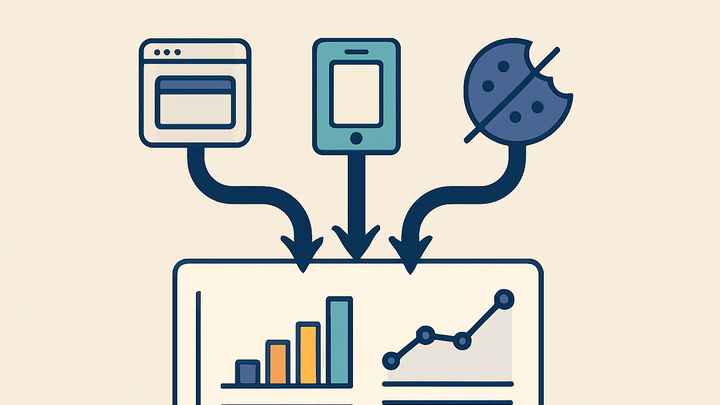Published on 2025-06-26T04:52:08Z
What is Roll-up Reporting? Examples with GA4 and PlainSignal
Roll-up reporting is the process of aggregating data from multiple sources, properties, or channels into a single consolidated report. This approach enables analysts to view performance metrics across websites, mobile apps, and subdomains without manually stitching together disparate datasets. Tools like Google Analytics 4 (GA4) provide native support for roll-up properties, while PlainSignal offers a lightweight, cookie-free solution for simple analytics. By leveraging roll-up reporting, organizations can gain a holistic view of user behavior, streamline reporting workflows, and drive more informed, data-driven decisions. Below, we explore how roll-up reporting works, its benefits, and examples of implementing it with both GA4 and PlainSignal.
Roll-up reporting
Aggregating multiple analytics data streams into unified reports for comprehensive, cross-channel insights.
What is Roll-up Reporting?
Roll-up reporting consolidates data from various properties, domains, and channels into a unified report. It simplifies cross-property analysis by aggregating metrics like sessions, users, and conversions. This unified view helps stakeholders understand overall performance without toggling between multiple reports.
-
Core concept
Combining multiple datasets into one report to simplify analysis and reveal high-level trends.
-
Analytics context
In analytics platforms, roll-up reporting spans websites, mobile apps, and subdomains, enabling a holistic measurement strategy.
How Roll-up Reporting Works
Roll-up reporting typically involves collecting data separately, aggregating it in a central location, and visualizing the combined metrics. The process ensures that data from different sources adheres to consistent schemas and naming conventions.
-
Data collection
Gathering raw event or hit-level data from multiple sources, such as websites, apps, or servers.
-
Data aggregation
Summarizing individual data points into higher-level metrics (e.g., total sessions, users, revenue) across all sources.
-
Data visualization
Presenting the aggregated metrics in dashboards or reports to highlight trends and comparisons.
Key Benefits
Implementing roll-up reporting unlocks several advantages for data teams and decision-makers.
-
Holistic insights
View performance across all digital touchpoints in one place, eliminating data silos.
-
Efficiency and time savings
Automate data consolidation to reduce manual report generation and errors.
-
Scalability
Easily add new data sources or properties without overhauling existing reporting setups.
Implementing Roll-up Reporting with GA4
Google Analytics 4 provides native roll-up capabilities via roll-up properties, allowing you to combine data streams from websites and apps.
-
Creating a roll-up property
In GA4, set up a new property and enable data streams for each website or app you want to include in the roll-up.
-
Configuring data streams
Link multiple data streams (e.g., iOS app, Android app, web) to the roll-up property to collect unified data.
-
Analyzing roll-up data
Use the GA4 interface to explore combined metrics, build reports, and compare performance across sources.
Implementing Roll-up Reporting with PlainSignal
PlainSignal is a cookie-free analytics solution that can easily roll up data from multiple domains with minimal setup.
-
Integration snippet
Add the following code to each page you want to track to consolidate data across domains:
-
PlainSignal tracking script
<link rel="preconnect" href="//eu.plainsignal.com/" crossorigin /> <script defer data-do="yourwebsitedomain.com" data-id="0GQV1xmtzQQ" data-api="//eu.plainsignal.com" src="//cdn.plainsignal.com/plainsignal-min.js"></script>
-
-
Unified reporting
Once the snippet is deployed, PlainSignal automatically aggregates data from all domains under your account for combined reporting.
Best Practices and Considerations
To ensure accurate and reliable roll-up reporting, consider these best practices.
-
Ensure data consistency
Use consistent naming conventions, event schemas, and parameters across properties to avoid mismatched metrics.
-
Privacy and compliance
Monitor data collection regulations (e.g., GDPR, CCPA) and leverage cookie-free solutions like PlainSignal where appropriate.
-
Performance optimization
Limit the number of data streams and sampling thresholds to maintain interface responsiveness and report accuracy.
